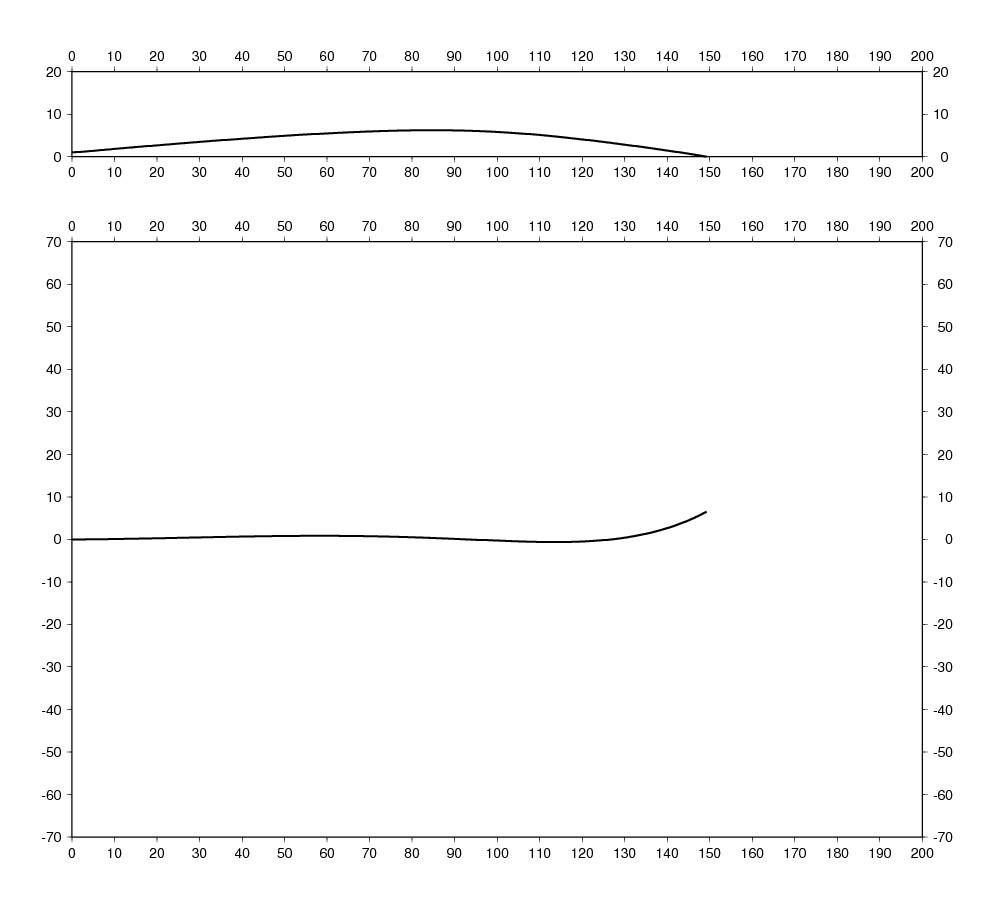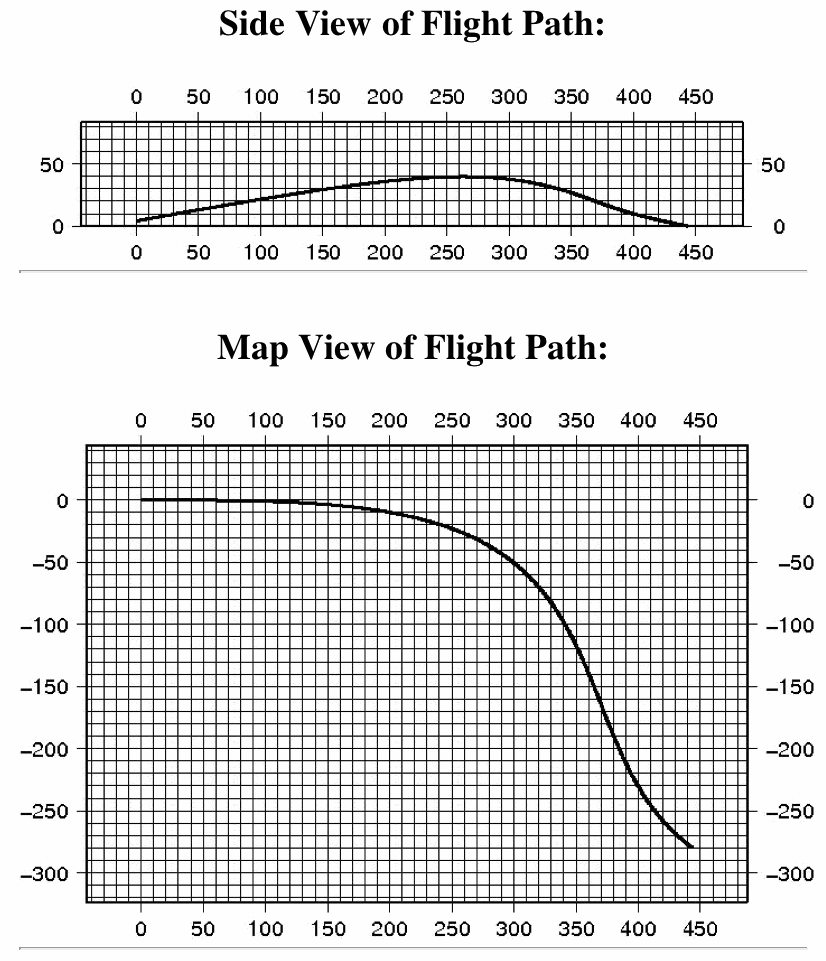dgdave
* Ace Member *
Sure we do. Its a slow, very understable disc thrown with lotsa hyzer and height.
Discover new ways to elevate your game with the updated DGCourseReview app!
It's entirely free and enhanced with features shaped by user feedback to ensure your best experience on the course. (App Store or Google Play)
CatPredator said:I don't think curve 3 really represents the first shot you mentioned. For that the disc is slowing down at the apex and spin is decaying (JHern's model is for a constant spin rate). If there is enough spin and the disc is nose down enough at it's peak, it may come out of a slight fade and start to turn again but that is from gravity accelerating it. ...
I've never seen an understable disc that, if you threw it hard enough, would turn, then fade, then turn, then fade again.
JR said:Oh i should have been more precise i wasn't speaking in the terms of physics i was thinking of practical throws in real life where an inch or a half degree of movement isn't usually gonna be the deciding factor to the disc getting to birdie putt range.
JR said:As long as we are talking theoretical issues that may not be that visible in the accuracy of a throw: How about the magnus force vs gravity or should i say lift vector change with varying steepnesses of the throw? Ain't gravity pulling the disc one way, lift pushing the disc in another and magnus force possibly introducing a third force momentum going in a different direction as the other two forces possibly in another direction than the spin is going in real life applications if there is wind? And the resultant effects on turn however minute that may be. Even if it is just for one second. And that time certainly varies in practical throws from disc to disc if OAT is present. Putters won't stabilize as quickly as hog drivers. In those cases accuracy in a real throw may go down enough to be significant to scoring.
jubuttib said:How about the Coriolis effect? =)JR said:As long as we are talking theoretical issues that may not be that visible in the accuracy of a throw:
CatPredator said:Do you think the curves will be symmetrical like that for discs in practice?
CatPredator said:I suppose there will be inconsistencies during the inertial phase you're talking about. The most relevant part would be the portion where precession approaches 0.
CatPredator said:Curve 3 confuses me some since we don't see discs flying like that in real life.
Wyno said:Yeah, I don't think curve 3 makes sense either... curve 2 would be a really hard-to-control disc, meathook until you throw it a tiny bit too hard, then turn and burn. I have a hard time seeing any disc go much beyond curve 1, maybe JHern put this in there as a test for the rest of us? :?
Wyno said:Also, these curves represent different discs' behaviour with a flat throw, as I understand it?
What you can accomplish with oat, hyzer angles, help from the wind, elevation etc is another story

dgdave said:There's a video of Barry S throwing this shot on the 05 or 06 MS DVD. It wasn't with height. It was down hill. Weird looking. Steve Dodge says "I wish I had a disc that did that. "
JHern said:The code accounts for hyzer angles, the wind, and elevation...
Wyno said:JHern said:The code accounts for hyzer angles, the wind, and elevation...
I can see how it would be useful to be able measure a discs properties and then predict how factors like initial hyzer angle, nose angle etc will influence precession across speeds, since those factors can be manipulated easier than spin rate. Could you show how the disc in curve 1 would be affected by changes in hyzer and nose angles?
As to changes in wind - I guess you mean changes in wind from the side then, rear/tail wind would just act like change in speed, right?
JHern said:OK, I've been moving forward again on this project. I have rigged up a web-based CGI script on my computer (running Apache web server). Basically, the user can select parameters from a form on a web page (speed, spin, hyzer, nose, launch, height, etc.), click a button "simulate flight," and the simulated flight path pops up on a results page. This is great fun to play with, actually, which is the whole point of making it in the first place. What I'd also like to do is establish several sets of flight parameters belonging to several generic molds (under-stable putter, stable putter, over-stable putter, then mids, then drivers, etc.), which can also be selected in the simulation.
Either way, I think this will be an interesting educational tool, and I look forward to getting it up on the web some place where it can go live. I've already been learning a lot from it, myself. One of the things that still amazes me is how sensitive the flight of a disc is with respect to small changes in the release orientation and speed of the throw. Throwing disc is difficult!!! One degree hyzer change can make a very big difference with some of the parameter sets. I think this just illustrates why throwing a disc with distance and accuracy is such a precision skill, perhaps more than the thrower even realizes.
jaboc83 said:I would love to see this both as a disc fanatic, and as a software engineer.Don't suppose you want to open up that source eh?

NoMoreTinCup said:Yeah, that would be a big turnover. What kind of parameters led to this flight? 275' of lateral movement at a decreasing speed and spin? Was there a tornado nearby? Just kidding, and curious.
KP
JR said:And didn't the grid need height information as well and shouldn't it be spread out to a large distance?
JR said:My high speed camera does not have good resolution, 446x384 or something like that at 210 FPS.